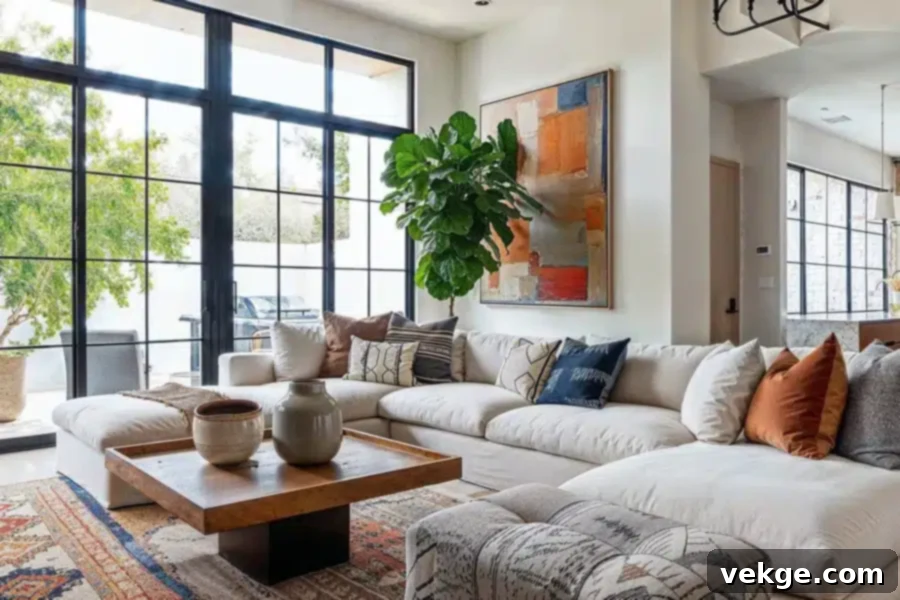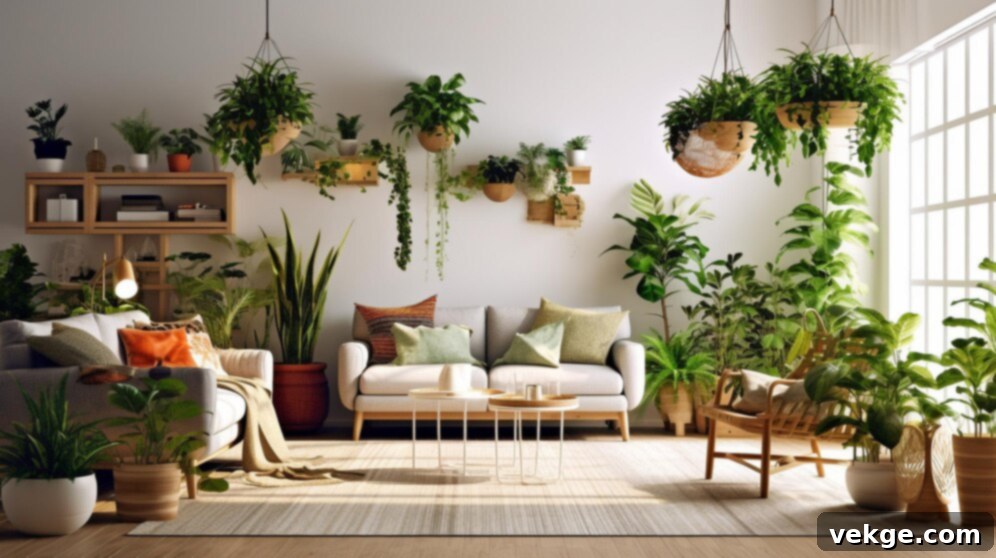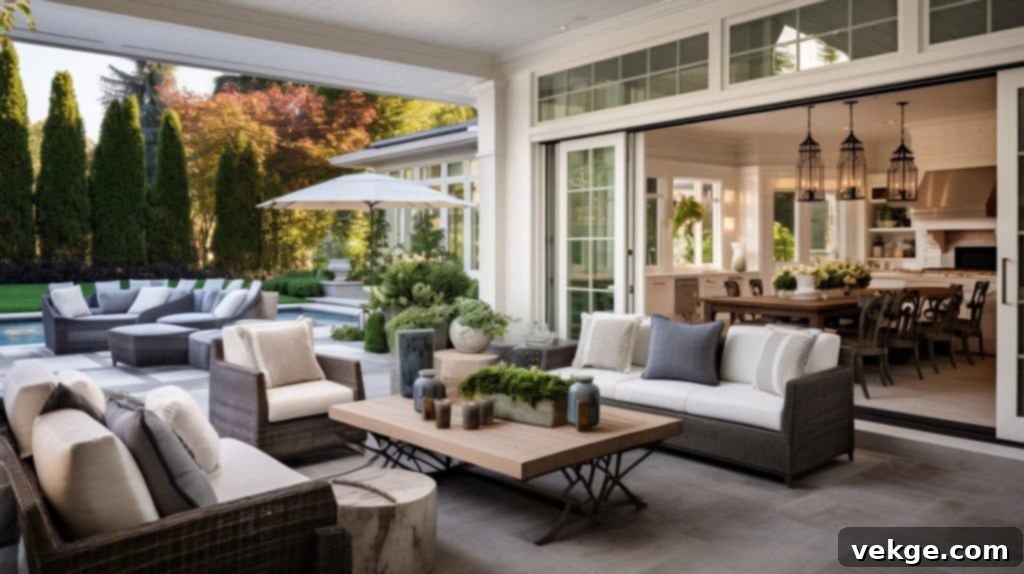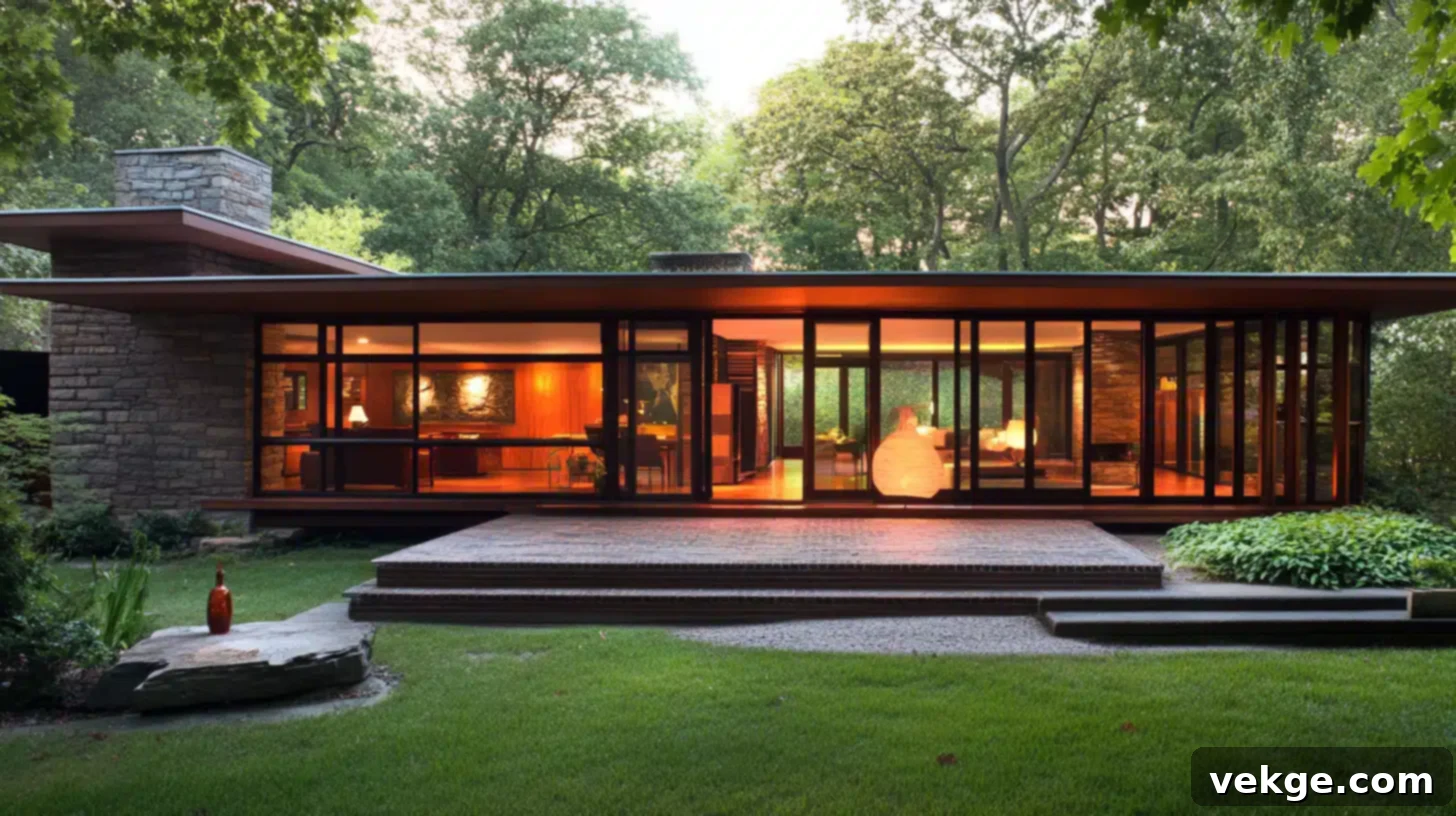Transform Your Home: A Comprehensive Guide to Modern Interior Design and Sustainable Living
Home design is far more than just decorating a space; it’s an art and a science dedicated to creating an environment that genuinely reflects your personality, fulfills your functional needs, and provides a sanctuary of comfort and joy. Whether you are embarking on the exciting journey of building a brand-new home or contemplating a thoughtful renovation of an existing one, the design choices you make hold immense power. They can profoundly impact how a space feels, how effectively it functions for daily life, and ultimately, your overall well-being within it. This comprehensive guide will walk you through the essential elements of crafting a home that is both aesthetically pleasing and perfectly tailored to your lifestyle.
Defining Your Unique Home Design Style

Before you delve into the intricate details of furniture selection, material sourcing, or color palettes, the foundational step in any successful home design project is to clearly identify your personal design style. This understanding acts as your compass, guiding every subsequent decision with confidence and cohesion. Are you drawn to the minimalist allure of clean lines and uncluttered spaces, reminiscent of modern Scandinavian or industrial aesthetics? Perhaps the cozy, lived-in feel of rustic farmhouse charm or the timeless elegance of classic luxury resonates more deeply with you. Or maybe your spirit thrives amidst the vibrant, global influences of bohemian eclecticism or the practical warmth of traditional design.
Understanding your preferences will empower you to make informed choices across all aspects of your home. For instance, if a contemporary style speaks to you, your focus will naturally gravitate towards neutral tones, sleek and functional furniture pieces, and an emphasis on open, airy spaces. Conversely, those who embrace an eclectic design philosophy might confidently incorporate bold colors, a diverse array of patterns, and unique, handcrafted decor pieces that tell a story. To solidify your vision, immerse yourself in design inspiration by exploring online platforms like Pinterest and Houzz, browsing interior design magazines, or visiting local showrooms and model homes. Creating a mood board, whether physical or digital, can be an incredibly effective way to visualize and consolidate your preferred aesthetic.
Optimizing Layout and Functionality for Your Lifestyle
A meticulously planned layout is undeniably the cornerstone of effective and comfortable home design. Begin this critical phase by thoroughly assessing your household’s unique needs and daily routines. Consider the size of your family, whether you have pets, if you frequently entertain guests, or if remote work necessitates a dedicated home office. Are multi-generational living arrangements a factor? Tailoring the spatial layout to your specific lifestyle ensures that every square foot of your home is not only utilized optimally but also enhances your daily living experience.
Open-concept designs continue to hold their popularity, celebrated for their ability to make spaces feel more expansive and for fostering seamless social interaction between different areas like the kitchen, dining, and living rooms. However, a growing number of homeowners are rediscovering the enduring charm and practical benefits of more segmented, defined spaces. This is particularly true in homes where privacy, noise control, or the need for distinct functional zones (such as a quiet reading nook or a dedicated play area) are priorities. Achieving a harmonious balance between openness and practicality can be masterfully accomplished through clever design techniques, including the strategic use of partial walls, elegant sliding doors, or versatile, multifunctional furniture that adapts to varying needs. Thoughtful consideration of traffic flow and natural pathways through your home is also essential to prevent bottlenecks and ensure a smooth, intuitive experience.
Harnessing Color Psychology in Home Design
The strategic choice of colors plays a pivotal, often understated, role in shaping a room’s entire ambiance and emotional impact. Colors possess an inherent psychological influence, capable of evoking specific moods and feelings. Soft, muted tones such as serene beige, tranquil light gray, or delicate pastels are perfect for cultivating calmness and tranquility, making them ideal choices for bedrooms, relaxation areas, and spa-like bathrooms. In stark contrast, vibrant hues like cheerful mustard yellow, sophisticated navy blue, or rich emerald green can inject invigorating energy, personality, and visual interest into more active spaces like living rooms, kitchens, or dining areas.
Beyond solid paint, experimenting with accent walls, introducing textured wallpapers, or even painting ceilings can add remarkable depth, intrigue, and a unique focal point to a space. When making color decisions, it is crucial to consider the natural light available in your home, as it profoundly influences how colors appear throughout the day and in different seasons. A color that looks vibrant under bright morning light might appear muted or entirely different in a dimly lit evening setting. Observing paint swatches at various times of day will ensure your final selection is perfect for your desired effect.
Sustainable Materials and Eco-Conscious Design

Sustainable design is rapidly moving from a niche concept to a mainstream imperative as homeowners increasingly prioritize eco-friendly choices and environmental responsibility. Integrating sustainability into your home design offers dual benefits: it significantly reduces your ecological footprint and can lead to substantial savings on energy bills and maintenance costs over time. Excellent options for eco-conscious renovators include furniture crafted from reclaimed wood, countertops made from recycled glass or concrete, rapidly renewable bamboo flooring, and low-VOC (Volatile Organic Compound) paints that improve indoor air quality. Other notable sustainable materials encompass cork, linoleum, recycled steel, and wool carpets.
Furthermore, making conscious choices about durable materials that are designed to age gracefully can save money and reduce waste in the long run. Investing in high-quality natural stone countertops, solid wood cabinetry, or robust, well-engineered flooring ensures longevity and a timeless appeal that won’t require frequent replacement. Prioritizing materials that are locally sourced, have a low embodied energy, and are recyclable further enhances the sustainability profile of your home. Look for products with certifications like LEED, GreenGuard, or Forest Stewardship Council (FSC) to ensure they meet stringent environmental standards.
The Seamless Integration of Technology in Modern Home Design
Technology is no longer a separate entity but an integral component seamlessly blending with contemporary home design to create smart, efficient, and intuitively responsive living spaces. From automated lighting systems that adjust to your mood and time of day, to climate control systems that learn your preferences, and voice-activated assistants that manage tasks, these innovations significantly enhance convenience, security, and energy efficiency. Consider incorporating smart home technologies that effortlessly integrate into your daily routines, such as programmable thermostats that optimize heating and cooling, app-controlled security cameras for peace of mind, or smart blinds that manage natural light and privacy.
Beyond physical installations, technology also plays a crucial role in the design process itself. Advanced online tools and software, including 3D rendering programs and augmented reality (AR) apps, allow you to visualize layouts with unprecedented accuracy, experiment with furniture placements, and even test how different lighting schemes affect a room before making any commitments. Furthermore, when conducting extensive research for home design ideas, sourcing materials, or exploring different styles online, maintaining privacy and security is paramount. Tools like residential proxies can be invaluable assets. They ensure secure and anonymous internet browsing, safeguarding your personal data and allowing you to access a wider range of geo-restricted design resources from around the globe without compromising your digital footprint.
Lighting: The Unsung Hero of Home Design
Lighting is arguably the most transformative element in home design, possessing the power to make or break a space’s aesthetic and functionality. A well-executed lighting plan employs layered lighting—a sophisticated combination of ambient, task, and accent lighting—to ensure a space is both highly functional and visually captivating. Ambient lighting provides general illumination, creating a welcoming glow throughout the room. Task lighting, such as pendant lights above a kitchen island or a desk lamp in a home office, focuses light precisely where it’s needed for specific activities. Accent lighting, like spotlights on artwork or uplights washing a textured wall, highlights architectural features or decorative elements, adding drama and depth.
Maximizing natural light should always be a priority. Large windows, strategically placed mirrors to reflect light, and sheer curtains that filter rather than block sunlight can significantly amplify daylight, creating a brighter, more expansive, and inviting atmosphere. For rooms with limited natural light, consider installing full-spectrum light bulbs, which mimic the balanced light of the sun, or even solar tubes (light tunnels) that channel natural light into interior spaces. Incorporating dimmers for all light fixtures allows for flexible control over mood and intensity, adapting the lighting to various times of day and activities.
Personalizing Your Space: Infusing Your Identity into Your Home
A house truly becomes a home when it intimately reflects the personalities, passions, and life stories of those who reside within its walls. Moving beyond generic decor, incorporating meaningful and personal elements is key to creating a truly bespoke environment. Display cherished family photos, arrange travel souvenirs that evoke fond memories, showcase unique artwork from local artists or your own creations, and curate bookshelves filled with titles that speak to your interests. These personal touches are what transform a sterile space into one that warmly tells your unique narrative and makes guests feel welcome into your world.
Houseplants offer another exceptional way to personalize, invigorate, and literally breathe life into a space. Beyond their undeniable aesthetic appeal, plants are proven to improve indoor air quality, reduce stress, and create a calming, natural environment. From towering fiddle leaf figs to delicate ferns, there’s a plant for every style and space. For those who may not possess a green thumb, low-maintenance options like resilient succulents, hardy snake plants, or elegant ZZ plants are perfect choices, bringing natural beauty without demanding constant attention.
Outdoor Spaces: Extending Your Living Area Beyond Walls

In contemporary home design, the concept of living space is no longer confined solely to the indoors. Outdoor areas—be it a charming, intimate balcony, a sprawling, verdant garden, or a highly functional patio—are increasingly being recognized as integral, valuable extensions of the home. Design these external environments to serve as true outdoor rooms, utilizing cohesive materials, colors, and design principles that echo your interior aesthetic. This creates a seamless transition and a sense of continuity.
Investing in comfortable, weather-resistant seating, durable outdoor fabrics, and thoughtful outdoor lighting can transform any exterior space into a year-round retreat for relaxation, dining, and entertaining. Popular features that significantly elevate outdoor design include inviting fire pits for cozy evenings, elegant pergolas or awnings for shade and architectural interest, and vibrant vertical gardens or container plantings to maximize greenery in smaller areas. Consider zoning your outdoor space just as you would indoors, creating distinct areas for dining, lounging, and perhaps even a quiet meditation spot. The goal is to maximize usability and enjoyment of your property’s entire footprint.
Smart Storage Solutions for an Organized Home
Clutter has a remarkable ability to undermine even the most meticulously designed spaces, quickly making a beautiful room feel chaotic and cramped. Implementing creative and efficient storage solutions is paramount to ensuring your home remains organized, functional, and aesthetically pleasing without sacrificing style. Think beyond simple bins and explore options like custom built-in shelving that seamlessly blends with your architecture, under-bed storage drawers for discreet organization, and multi-purpose furniture pieces such as ottomans with hidden compartments or coffee tables with integrated storage. These solutions are both practical and incredibly space-saving.
For homes with limited square footage, maximizing vertical storage is a game-changer. Floating shelves can display decor while offering practical storage, wall hooks are perfect for coats and bags, and stackable storage containers or modular shelving units are excellent for keeping items off the ground and within easy reach. In kitchens, pantry organizers, drawer dividers, and pull-out systems can transform chaotic cabinets into highly efficient storage zones. Ultimately, a well-planned storage strategy helps to maintain order, reduces visual noise, and contributes significantly to a more peaceful and enjoyable living environment.
Effective Budgeting and Planning for Your Design Project
While the excitement of home design can be infectious, establishing a realistic and carefully considered budget is an absolutely essential step to prevent overspending and ensure your project’s financial viability. Begin by prioritizing the areas that will add the most value, both to your lifestyle and potentially to your home’s resale value, such as kitchens and bathrooms. Allocate funds accordingly, remembering that a contingency fund (typically 10-15% of your total budget) is crucial for unexpected expenses. You don’t have to tackle every single project at once; a phased approach allows for more thoughtful decisions, spreads out costs, and enables you to live with changes before committing to the next stage.
Thorough research into material costs, diligently sourcing items, and comparing multiple quotes from reputable contractors are critical steps in staying within your financial parameters. Online tools, project management apps, and local resources can significantly streamline the planning process, helping you track expenses, manage timelines, and organize tasks. Creating a detailed project plan, complete with timelines and milestones, ensures you are well-prepared and can make informed decisions before embarking on any major changes. A clear plan is your roadmap to a successful and stress-free design journey.
Navigating Design Trends and Embracing Timeless Style
The world of home design trends is constantly evolving, with new styles emerging and old ones making a comeback. While it can be tempting to meticulously follow the latest fads, the most enduring and satisfying home designs are those that incorporate elements with lasting appeal and personal significance. A prudent approach is to differentiate between fleeting trends and timeless design principles. For instance, while bold patterns or statement furniture pieces might be trending, they should serve to complement and enhance your overall design rather than dominate it in a way that risks quickly dating your space.
Focus on foundational elements like quality materials, classic silhouettes, and a neutral base palette, then layer in trends through easily changeable accessories like throw pillows, artwork, or decorative objects. A truly well-designed home is, at its core, a reflection of individuality, thoughtful functionality, and creative expression. By harmoniously blending meticulous planning, sustainable practices, and a touch of innovative flair, you can craft a living space that is not only visually stunning but also deeply personal and perfectly attuned to your life. Whether you are embarking on a design journey from scratch or lovingly revamping an old space, the process of transforming a mere house into a cherished home is an inherently rewarding and profoundly personal endeavor.
